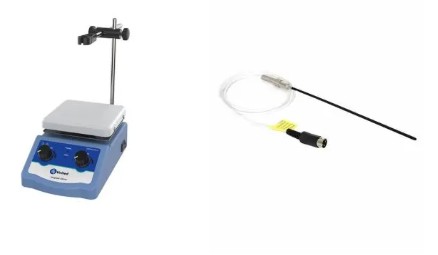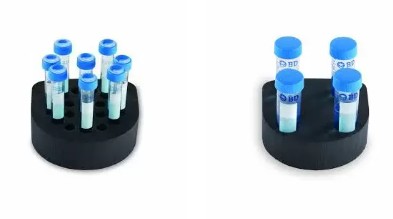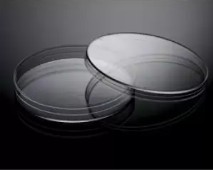
Exploring the Top 20 Essential Lab Equipment: A Comprehensive Guide
Laboratories are the beating heart of scientific research, and their efficiency relies heavily on the advanced tools and equipment they employ. In this comprehensive guide, we will delve into the top 20 lab equipment that plays a crucial role in various scientific disciplines, from molecular biology to chemistry and beyond.
Laboratory Centrifuge:
The laboratory centrifuge is an indispensable tool used for separating substances of different densities in a sample. It applies centrifugal force to sediment particles or separate liquids, making it an essential device for tasks like blood sample separation and DNA isolation.
Heating Mantle:
Heating mantles are indispensable tools in laboratory settings, offering a myriad of benefits that contribute to precise and controlled heating during experiments. These devices consist of a flexible, insulated shell that houses a heating element, providing uniform heat distribution to the container placed within. One of the primary advantages of heating mantles lies in their ability to deliver consistent and even heating, crucial for reactions requiring precise temperature control.
Researchers benefit from the hands-free operation of heating mantles, allowing them to focus on other aspects of their experiments while maintaining a stable and controlled heating environment. The design of these mantles ensures that the heat is evenly distributed across the entire surface of the container, reducing the risk of localized overheating and improving the reproducibility of results.

Homogenizer:
Homogenizers are essential for breaking down cell walls and disrupting samples for various applications, including DNA, RNA, and protein extraction. These devices ensure a uniform mixture, vital for accurate analysis and experimentation.
Hotplate Stirrer:
Combining both heating and stirring capabilities, the hotplate stirrer is a versatile tool widely used in chemistry labs. It allows scientists to perform reactions at specific temperatures while maintaining constant agitation for uniform mixing.

Laboratory Glassware Washer:
Maintaining a sterile environment is crucial in laboratories, and a glassware washer ensures that laboratory glassware is thoroughly cleaned and sterilized. This not only saves time but also enhances the reliability of experimental results.
Magnetic Stirrer:
Magnetic stirrers have become indispensable in laboratories, providing numerous benefits that enhance experimental processes. These devices consist of a magnetic bar placed within a container and a magnetic stir plate beneath it, generating a rotating magnetic field. One of the primary advantages is their ability to ensure consistent and homogeneous mixing of liquids without the need for direct contact with a stirring rod.
Precision and control characterize magnetic stirrers, allowing researchers to regulate stirring speed and adjust the intensity of mixing. This feature is crucial in various applications, such as chemical reactions, titrations, and biological assays, where uniformity and accuracy are paramount. Additionally, magnetic stirrers promote hands-free operation, freeing up researchers to focus on other aspects of their experiments.

Microplate Reader:
Microplate readers are essential in biochemistry and molecular biology for analyzing samples in microplates. They measure absorbance, fluorescence, and luminescence, providing valuable data for assays and experiments.
Orbital Shaker:
Orbital shakers are used to agitate liquids in a circular, orbital motion. They are vital for culturing cells, growing microorganisms, and mixing substances in various biological and chemical applications.
Lab Oven:
Lab ovens provide a controlled environment for heating and drying samples. They are crucial for processes such as sterilization, evaporation, and curing, contributing to the reproducibility of experiments.

qPCR Machine:
Quantitative Polymerase Chain Reaction, qPCR machines are pivotal in molecular biology for amplifying and quantifying DNA. They play a crucial role in genetic research, diagnostics, and forensic science.
Thermal Cycler:
The thermal cycler, also known as a PCR machine, is specifically designed to amplify DNA through the polymerase chain reaction. It allows for precise temperature control, enabling the repeated heating and cooling cycles required for DNA replication.
Vortex Mixer:
Vortex mixers provide rapid and efficient mixing of liquids in small containers. They are commonly used in biology and chemistry labs for tasks such as re-suspending cells, mixing reagents, and preparing samples for analysis.

Automated Cell Counter:
Automated cell counters have revolutionized cell counting in laboratories. They offer quick and accurate cell counts, making them indispensable in cell culture work, hematology, and clinical diagnostics.
96 Deep Well Plate:
The 96 deep well plate is a high-capacity microplate designed for sample storage and high-throughput screening. It is widely used in drug discovery, genomics, and proteomics research.
Cell Culture Dish:
Cell culture dish provides a controlled environment for the growth and maintenance of cells outside their natural habitat. They are crucial in cell biology research, drug development, and tissue engineering.

Cell Strainer:
Cell strainers are sieves designed to separate cells from debris and clumps, ensuring a uniform single-cell suspension. They are vital in cell isolation, flow cytometry, and other cell-based assays.
Beakers:
Beakers, ubiquitous in laboratory settings, play a pivotal role in scientific research due to their versatile design and numerous benefits. Their cylindrical shape with a lip facilitates pouring and transferring liquids with precision, ensuring accuracy in measurements. The clear glass or plastic construction allows researchers to observe reactions, color changes, and sample characteristics during experiments.

One of the primary advantages of beakers is their ease of use in a variety of applications. They serve as vessels for mixing, stirring, and heating liquids, providing a practical solution for a wide range of chemical and biological processes. The graduated markings on the side enable quick volume assessments, promoting efficient and precise measurements.
Microscope Slides:
Microscope slides are essential for preparing and observing samples under a microscope. They play a crucial role in histology, pathology, and various biological and medical research applications.
Ductless Fume Hood:
Ductless fume hoods provide a safe working environment by containing and removing harmful fumes and vapors without the need for external ventilation. They are crucial in protecting researchers from exposure to hazardous substances.
In conclusion, these top 20 laboratory equipment items represent the backbone of scientific research and experimentation across various disciplines. Their precision, reliability, and efficiency contribute significantly to the progress and success of laboratories worldwide. As technology advances, these tools continue to evolve, empowering scientists to explore new frontiers and push the boundaries of human knowledge.

Comments (0)